 Be Inspired Blog - Arizona
Be Inspired Blog - Arizona
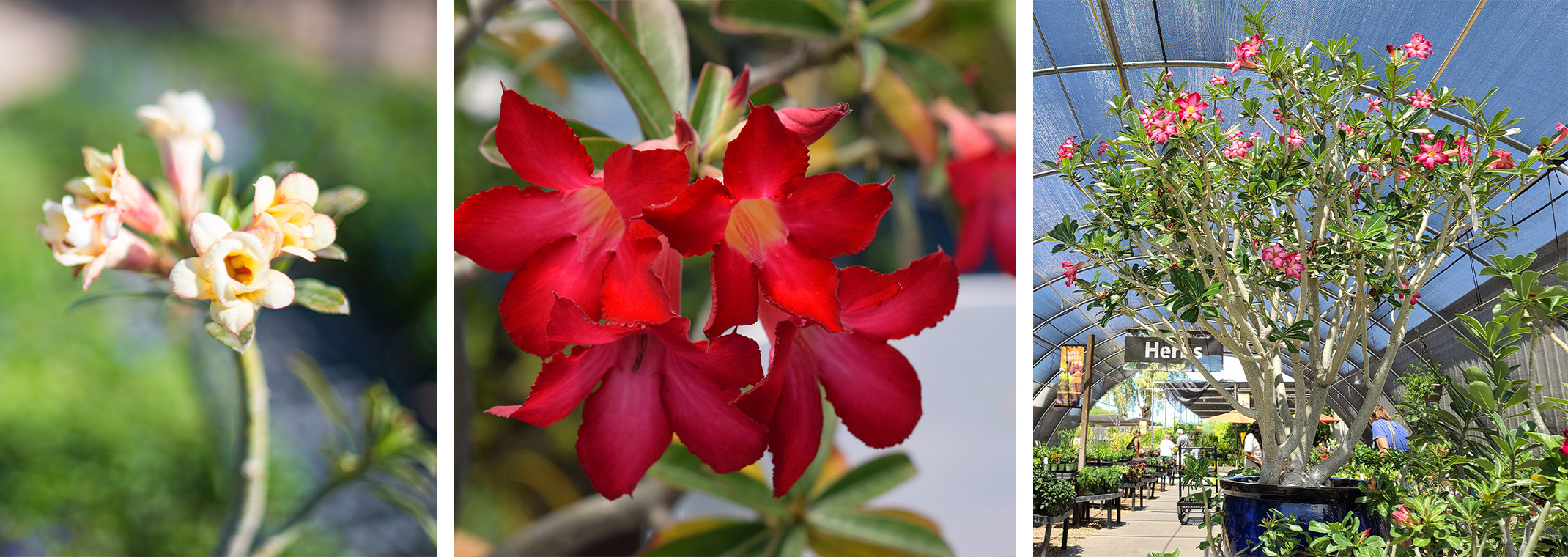
Adeniums - The Desert Rose
A Desert Rose by Another Name is Called an Adenium
Adenium obesum (also known as a Desert Rose or a Karoo Rose) is a succulent plant that is able to store water within its stem and branches through periods of little to no rainfall. As such, it is a wonderful plant for containers due to its drought tolerant nature and its unusual, beautiful shape.
At SummerWinds Nursery, we have a variety of adeniums to choose from; available seasonally, while supplies last.
Adenium Characteristics
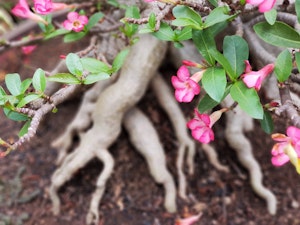
Light Requirements:
April through October, Adeniums grow best outdoors in the full sun (if large and well established - 10" pot or larger), otherwise outside in filtered full sun/light shade.
Bring Adeniums in containers indoors for the winter to avoid freezing and place in a south or west window.)
Watering:
For the best rate of growth and healthiest Adeniums, water regularly. Wait to water the Adenium until the soil is almost dry at 1-2" deep.
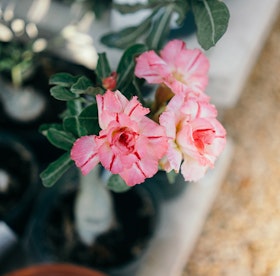
Fertilizing:
Fertilizers should only be applied while your Adenium is actively growing (not during winter dormancy—usually some time in November until late March).
During it's growing season (approx. April thru November), Adeniums in outdoor containers can be fertilized with a full strength application of general purpose fertilizer every two weeks; alternatively a half-strength solution applied once a month during April - October will be adequate if being grown indoors in a very well lit location with many windows.
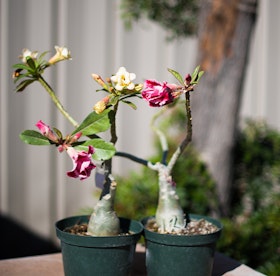 Temperature:
Temperature:
Adeniums will not survive a frost. If brought indoors and the temperature is over 55 degrees, dormancy may need to be forced by withholding all water until the leaves drop. Adenium plants may try to grow indoors over the winter if temperatures are too high (70 degrees or higher). Winter growth is NOT recommended, as dormancy will provide a stronger, more beautiful plant and structure.
Adeniums can be overwintered outdoors under a porch roof or on the south side of your home, etc. if the temperature is under 50 degrees and they are kept in a place that is absoutley frost-free and DRY (from both rain and watering). If temperatures drop under 20 degrees, then extra care and frost protection measures are required.
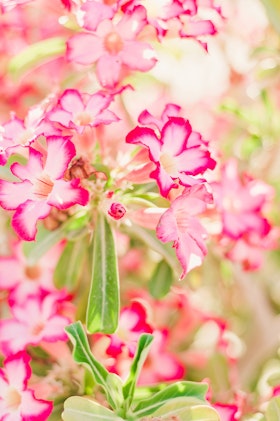
Growth & Flowering:
Adeniums are naturally slow growing mostly due to their need for minimal water. This makes for their interesting and unusual growth forms. Water them according to the growth rate and shape you desire. Flowering generally begins late winter or early spring, often before the plant leafs out. It may stop during the hottest part of the summer (mid-May thru June), and then continue to bloom again into the fall.
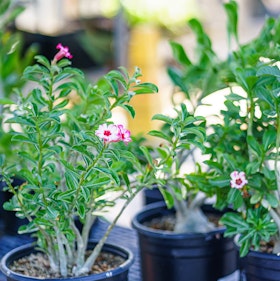 Soil & Potting:
Soil & Potting:
Adeniums prefer well drained soil (soil drains within a matter of seconds after being applied). A soil such as E.B. Stone Cactus Mix will work well. Alternatively, you may choose to use your own soil recipe.
Adeniums will tolerate being pot bound without ill effects. Repotting should only be done early/mid-way through the growing season. Make certain not to replant it any deeper than it was. Adeniums can be watered within a day or two of repotting.
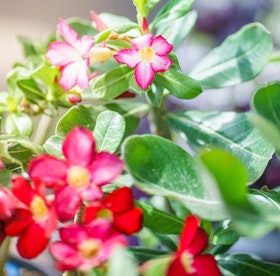 Pests & Diseases:
Pests & Diseases:
Adeniums are rarely subject to diseases, but are occasionally hosts for one of three insect pests—mealy bugs, aphids and spider mites. Outdoor growing often prevents these problems. However, if they occur, a treatment may need to be repeated several times for complete control.
Source: The Desert Botanical Garden, Desert Gardening Guides.
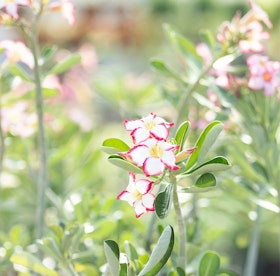 Want to Learn More About Adeniums?
Want to Learn More About Adeniums?
To learn more ways to care for your adeniums, read the blogs below:
- "Key Winter Care for Adeniums"
- "Have an Adenium? If So, it's Time to Bring Your Adenium Out of Dormancy"

